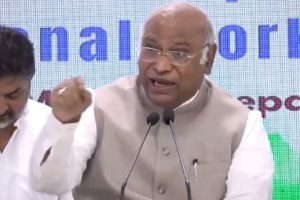The ways of the bureaucracy have always been strange and mysterious, but the strangeness sometimes surpasses the bizarre.
I came across such a decision while sifting through the notifications related to G-20 issued by the Press Information Bureau (PIB) through which the Government of India informs the public about its policies, programmes, initiatives and achievements.
Advertisement
That notification dated 23 February 2023 apprises the outcome of a meeting chaired by the Union Minister of State in charge of Science & Technology (S&T) and attended by Secretaries of all the six Science Ministries and Departments, viz., Science & Technology, Biotechnology, CSIR, Earth Sciences, Space and Atomic Energy, beside the Principal Scientific Advisor to the Government, to review “the preparations of Science-20 meetings of the ensuing G-20 Summit”. In the lengthy notification, one sentence alarmed me. It said,
“Apart from preparations for the G-20 Science Meetings, the agenda of today’s meet were the review of Science Awards, creation of a new communication structure after the winding up of Vigyan Prasar and Sankalp Meetings.” I know Vigyan Prasar (VP) too well to know that some sinister move was on behind the façade of “creating a new communication structure” which has not yet been spelled out. I tried to verify from VP but its officials were tight-lipped and I drew a blank from them. But from my ministry friends,
I learnt that VP indeed has been put on a ventilator whose plug will be finally pulled out this August. Some institutions work quietly behind the glare of limelight with unparalleled commitment and dedication but unnoticed by the public. VP is one such – most Indians are probably unaware that such an organisation even exists and won’t be bothered if it ceases to do so.
It is an autonomous institution under the Department of Science & Technology (DST) whose brief includes popularisation of science and promoting scientific temper in the country.
It is a unique institution in India with no parallel, within the government or outside. It discharges its mandate through print and electronic media, through publication of books, journals and newsletters, by making films on popular science and organising science fairs, workshops and events all over the country, by supporting science museums in the states and by assisting science clubs set up with private efforts by mentoring them and providing them with materials for disseminating scientific knowledge and promoting scientific approaches to address cultural issues and habits steeped in superstitions.
VP was set up in 1989 and during its short span of existence, what it has achieved so far in taking science to people with a skeletal staff of only 10 scientists and some 25 administrative staff is unbelievable. It has published 400 books by renowned scientists and science writers, books that command readership far beyond the borders, and not only in English.
It publishes a monthly bilingual journal called Dream 2047 in English and Hindi. The journal, priced at the princely sum of Rs 20 and available free on the web, has 36,000 subscribers and an outreach to almost every government school in the country.
It has 10 other monthly newsletters in vernacular languages: Bigyan Katha in Bengali, Sandhan in Assamese, Ariviyal Palagai in Tamil, Kutuhali in Kannada, Vijananavani in Telugu, Vigyan Ratnakar in Maithili, Tajassus in Urdu, Gaash in Kashmiri and Jigyasa in Punjabi. All these are available free of cost for anyone to read.
As regards films and videos, a more effective means of communication, especially for science, VP has so far made 5,000 films, including the ones produced for “India Science”, an internetbased 24X7 OTT channel that it runs. These are telecast by Doordarshan and Sansad TV and for most of our rural folks and students, remain the only sources to learn science from scientists in a language that lay viewers can understand.
VP has also produced over 3,000 radio science programmes in 19 languages and 12 dialects including Gondi, Bodo etc. It conducts over 50 workshops every year for different target groups like students, housewives, elderly people, etc., on different aspects of science and technology.
It runs a portal, “India Science Wire” (ISW ) for disseminating news about science. On February 28, five days after the PIB notification informing of its winding up, in a glittering ceremony presided over by the Minister in charge of S&T on the occasion of National Science Day celebration, VP released a book called Vigyan Vidushi that encapsulated the lives and works of 75 outstanding women scientists of India from the pre-independence period onwards.
Most of these scientists, unknown though they are to most Indians today, did pioneering scientific research while struggling against formidable social and cultural taboos, and contributed significantly to global scientific knowledge. Reading that book, one wonders at their achievements – some of their works were worthy of a Nobel. What better way to celebrate 75 years of our independence than resurrecting these forgotten women of science?
It is not that the organisation is a white elephant that guzzles a huge amount of taxpayers’ money and that the government is winding it up for reasons of economy. In fact, far from it. I can see from its annual report for the fiscal year 2022 that it received only Rs 18.72 crore as grant from the DST budget of Rs 5,140 crore.
VP has a modest budget of only Rs 14 crore, of which its programme and activity expenses account for Rs 6.70 crore and the rest account for establishment and other expenditure, with the balance of the grants being carried over to the next year for capital purposes. If economy is not the reason for the abrupt decision to close down the organisation, then what prompted it?
Unfortunately, in the black box of functioning of the Indian politico-administrative system, we would possibly never know the answer, in the absence of which one can only make some guess, especially since nothing is known about the “new communication structure” that is supposed to replace VP.
Is it because the efficiency of the organisation and its superlative achievements are attracting the envy of other entities in the governmental system? Is it because VP sets an example that others find difficult to emulate? Or is it because there are some vested interests at play?
It is inconceivable that the DST will have the capacity and efficiency to carry out all the works that VP has been doing. Science communication is not a bureaucratic job, it requires specialised skills to take science to the people in a manner that they can understand and appreciate. It also requires a commitment to the cause and a missionary zeal that bureaucrats of the Ministry who are perpetually looking forward to plum postings and foreign assignments are hardly likely to possess. In the absence of required capacity within the Ministry, the job has to be entrusted to some private organisation.
Since VP is the uncontested leader in the field of science communication, such an organisation does not exist as of now. Is it then another attempt at privatising and outsourcing in order to extend benefits to some private entity?
If the government really wants to promote science communication through private media, it is most welcome in a country that lacks and badly needs such initiatives which can be encouraged by providing liberal incentives. For that, VP need not be closed down.
Given the government’s professed commitment to the cause of science, its intent to close down one of the best performing institutions that eminently serve this cause is really intriguing.
Lastly, no one knows if the government has a plan for the future of the staff employed in the organisation. Many of them would be well past the prime of their working careers to seek another job now. Would they be absorbed in another government entity to work like square pegs in round holes, or be given the unceremonious farewell of a VRS? Before the super-bloated egos of half-witted officialdom, it hardly matters if an organisation that cannot be replicated is decimated by the shortness of their imagination and left to die unwept, unhonoured and unsung.
Does anyone really bother for science? Disclaimer: I have been closely associated with VP for more than a decade. VP has published a trilogy of my books on evolution and I happen to be a regular contributor to their journal Dream 2047.
I also contributed five chapters to the book Vigyan Vidushi mentioned above. But none of these facts has anything to do with the contents of this article which reflects the deep anguish felt by a citizen about the forced demise of an apolitical and irreplaceable institution of excellence functioning in an area that is ever more important in a fast-modernising India
(The writer is a commentator, author and academic. Opinions expressed are strictly personal)











